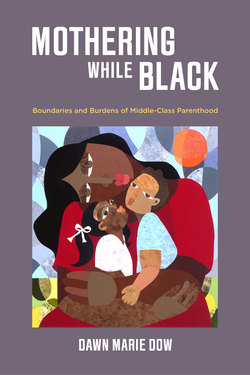Читать книгу Mothering While Black - Dawn Marie Dow - Страница 14
Оглавление2 Border Crossers
UNDERSTANDING STRUGGLE
Nia, married and the mother of two sons, described the relationships she wanted all her children to have with other African Americans:
I want my children to be well rounded. I want them to be cool. I want them to be able to interact with a lot of different people and in a lot of different situations. In particular, I want them to be able to interact with black people, all kinds of black people. And not be scared or intimidated or feel like they’re not black enough, or in situations with whites not feel comfortable or sure how to act.
Nia wanted her sons to be able to interact with many types of people: both poor and economically well-off African Americans as well as people of other races. She believed that in order to accomplish this, her children needed to feel secure in their African American identity and be surrounded by people who would not subtly communicate that being African American was inferior. Nia described how this goal influenced the care-givers she selected for her sons:
We had an issue with another childcare provider, where she would be walking and she would be scared of the people in the neighborhood. . . . I don’t care if they are a kid; speak. You need to smile and say hello, because you see them every day. I don’t care if they are smoking crack, you could smile and say hello as you pass them smoking crack. . . . I don’t want my child to be part of that, and for them to have that concept; like, be scared of those people, you don’t want to touch them, they’re dirty. . . . That’s not okay. So, we were through with that nanny.
Although Nia was financially able to hire a full-time nanny, she lived in a neighborhood with people who were significantly less advantaged, including those with visible drug addictions. She did not want her children to look down on other African American community members who had less or to be fearful of them.
Nia’s experiences with racially biased caregivers led her to be more circumspect when interviewing prospective nannies. She asked direct questions about race and racism, and she underscored the importance of her children’s caregiver being comfortable talking about these issues. She explained,
In our family, my husband and I, we eat racism for breakfast. We talk about racism and race, and we think about it a lot. That is the lens from which we see a lot of things. And it’s hard, like, sometimes you just want to take off your race lens for a second and just be a human being. But we can’t do that, you know. So, we can’t have someone here that doesn’t have that certain lens or is not willing to look at that lens, and maybe even change their lens, you know.
As discussed in chapter 1, the African American middle- and upper-middle-class mothers in my research screened their children’s teachers, administrators, and others for racial intelligence and sensitivity. With her caregiver, Nia also demanded a specific level of comfort related to negotiating less privileged neighborhoods and community members. The meaning of “racially intelligent and sensitive caregivers” varied, however, for the three different groups of mothers.
This chapter focuses on a group of mothers that I term “border crossers,” who worked to foster a border-crossing identity in their children. Border crossers were one of three groups of African American middle-class mothers that I identified in this research (the other groups are discussed in chapters 3 and 4, respectively). For border crossers, caregivers needed to be able to confidently navigate and/or live in poor African American communities with higher crime rates and to respectfully interact with residents from those communities. This was important because caregivers were setting an example that their children were likely to follow.
LIFTING AS WE CLIMB: RETAINING CONNECTIONS TO LESS PRIVILEGED AFRICAN AMERICANS
“Lifting as we climb,” an expression that is often attributed to Mary Church Terrell, describes an aspiration that successful African Americans will reach back to those who are less successful and lend a helping hand as they pursue individual achievement and success. In the traditional template of upward mobility, the concept of lifting as we climb is generally neither a central component of success nor an expectation of those who achieve it. The classic depiction of upward mobility is the Horatio Alger story, in which an individual pulls themselves, and perhaps their family, out of dire economic and social situations by hard work and self-sacrifice.1 Often the narrative of upward mobility involves moving up and out and leaving one’s community behind to merge into a higher social class or stratum. Those left behind have failed to have the “right stuff” in the form of cultural practices, values, desires, or motivation to succeed.2 Upward mobility is often envisioned as the shedding of lower status or negative cultural and social capital that will no longer be useful in one’s new life of higher status, which will require dominant cultural and social capital.3 Parents might conjure up for their children experiences of struggle as concrete examples of the value of hard work, but less often do they bring their children to the poverty-stricken, and potentially crime-ridden, environment of their origins to teach skills of survival—and even less do they choose to live in such environments.
